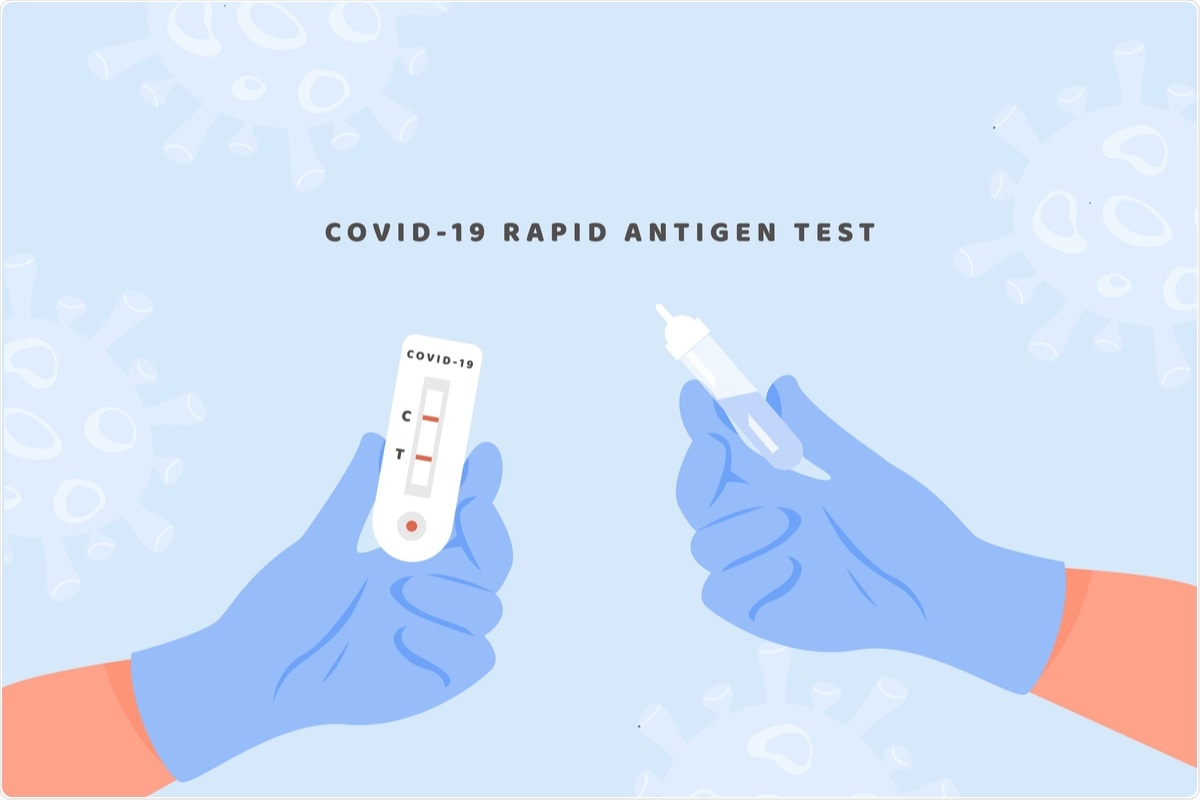buy generic cialis professional no prescription toronto
Testing for severe acute respiratory syndrome coronavirus 2 (SARS-CoV-2) remains a critical tool in controlling the coronavirus disease 2019 (COVID-19) pandemic. Antigen-detecting rapid diagnostic tests (Ag-RDTs) have the potential to increase testing, particularly those that can be used at the point of care, with limited laboratory facilities.
 Study: Use cases for COVID-19 screening and surveillance with rapid antigen-detecting tests: a systematic review. Image Credit: millering/ Shutterstock
Study: Use cases for COVID-19 screening and surveillance with rapid antigen-detecting tests: a systematic review. Image Credit: millering/ Shutterstock
A new study has been published in the medRxiv* preprint server, where scientists conducted a systematic review of the use cases and performance of Ag-RDTs for detecting SARS-CoV-2.
Background
While research has evaluated the diagnostic accuracy of Ag-RDTs, less is known about the settings Ag-RDTs are being used around the world and their performance in these settings. Ag-RDT results can be made available in 15 to 30 minutes, owing to which they have widespread applications, particularly in settings without laboratory facilities for molecular tests.
Ag-RDTs and nucleic acid amplification tests (NAATs) such as real-time reverse transcription-polymerase chain reaction (rRT-PCR)-based assays are the two main classes of diagnostic tools for detecting active SARS-CoV-2 infection. The former works by detecting antigens, while the latter detects viral RNA. The accuracy of Ag-RDTs depends on factors such as the viral load in the specimen, how to buy methotrexate paypal payment without prescription the quality of the sample, and the time from the onset of infection. While its sensitivity is lower than NAATs, there are advantages in terms of cost and rapidity of obtaining results. Ag-RDTs are usually most accurate when viral loads are highest.
A comprehensive assessment of how Ag-RDTs are being used in the real world has not been conducted to date. In this review, scientists synthesized the literature regarding specific use cases and the overall performance of Ag-RDTs for the detection of SARS-CoV-2. The key objectives were to understand (i) settings where Ag-RDTs have been used, ii) and what were their performance characteristics across varied settings.
The review
Four thousand three hundred thirteen studies from 2020 to 2021 were included. Four thousand one hundred forty-seven studies were excluded after title/abstract screening, and, ultimately, 39 (35 published and four preprints) studies were included in the qualitative synthesis. Overall, the studies documented Ag-RDTs as convenient, rapid, and low-cost interventions capable of increasing access to testing in various settings. It was also observed that Ag-RDTs could be performed and interpreted correctly when conducted by healthcare workers, other trained personnel, and by participants themselves.
The sensitivity of Ag-RDTs in some cases was low, particularly among asymptomatic individuals and, overall, estimates ranged from 40% to 100% across the studies. A number of the studies noted the value of testing with Ag-RDTs, particularly in high-prevalence settings. On the other end of the spectrum, some studies cautioned using Ag-RDTs in settings where sensitivity was of utmost importance. Meta-analyses of Ag-RDT diagnostic accuracy also revealed a low sensitivity to asymptomatic individuals.
The variable performance of Ag-RDTs compared with RT-PCR hints that the value of using this method should be meticulously evaluated for each use. The prevalence of COVID-19 is a key factor as the probability that a positive Ag-RDT result is a true positive is reduced in low prevalence settings. False positives may have a large impact, e.g., a false positive may lead to an entire classroom or workspace having to isolate for 10 to 14 days.
False-negative results may enable an infected person to get on an airplane or attend a mass event. These should, however, be considered in conjunction with the big picture, e.g., not stopping transmission in a classroom may lead to a city being locked down. One study found that effective screening depended largely on the frequency and speed of testing and not much on test sensitivity. Additionally, a US-based study showed that Ag-RDTs have a higher positive predictive value than RT-PCR for active SARS-CoV-2 infection.
Strengths and limitations
The strength of this study includes its comprehensive approach and inclusion of a broad range of studies from Europe, North America, Africa, and Asia. It also included many studies with large sample sizes. Rigorous methods were followed with respect to data extraction and quality assessment. One point of improvement of the study is that it could have represented the low and middle-income countries (LMICs) better. Heterogeneity in study design and setting also prevented scientists from undertaking a meta-analysis. Further, the search was also restricted to English and French, which may have excluded certain reports. Nevertheless, the review is the first comprehensive assessment of how Ag-RDTs have been used in the real world.
Conclusion
The review highlights the versatility of Ag-RDTs as rapid, low-cost, and easy-to-use COVID-19 screening tools. It is believed that Ag-RDTs can be easily deployed in a broad range of settings, which should help implement effective testing programs.
*Important Notice
medRxiv publishes preliminary scientific reports that are not peer-reviewed and, therefore, should not be regarded as conclusive, guide clinical practice/health-related behavior, or treated as established information.
- Anand, A. et al. (2021) Use cases for COVID-19 screening and surveillance with rapid antigen-detecting tests: a systematic review. medRxiv. doi: https://doi.org/10.1101/2021.11.03.21265807 https://www.medrxiv.org/content/10.1101/2021.11.03.21265807v1
Posted in: Medical Science News | Medical Research News | Disease/Infection News
Tags: Antigen, Coronavirus, Coronavirus Disease COVID-19, Diagnostic, Frequency, Healthcare, Laboratory, Nucleic Acid, Pandemic, Polymerase, Polymerase Chain Reaction, Research, Respiratory, RNA, SARS, SARS-CoV-2, Severe Acute Respiratory, Severe Acute Respiratory Syndrome, Syndrome, Transcription

Written by
Dr. Priyom Bose
Priyom holds a Ph.D. in Plant Biology and Biotechnology from the University of Madras, India. She is an active researcher and an experienced science writer. Priyom has also co-authored several original research articles that have been published in reputed peer-reviewed journals. She is also an avid reader and an amateur photographer.
Source: Read Full Article
